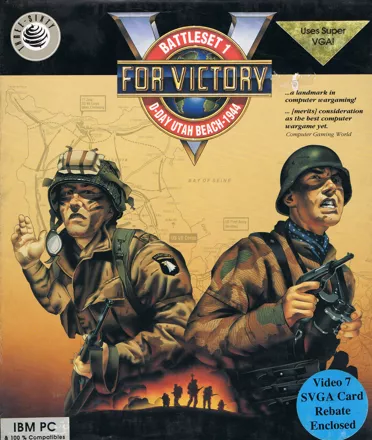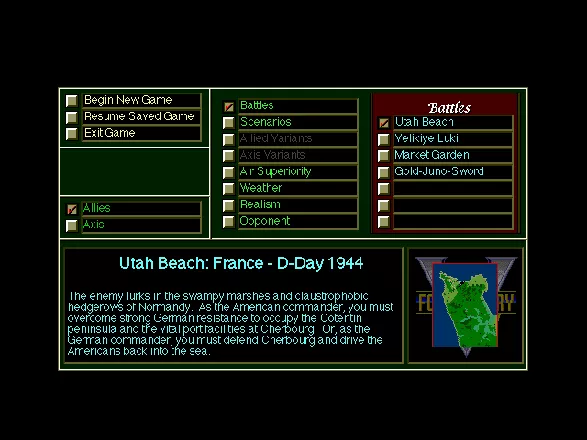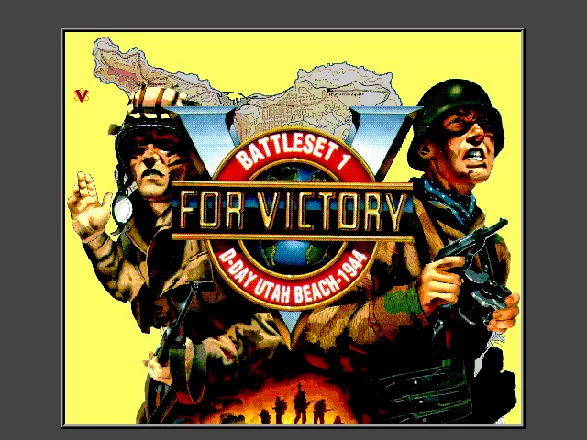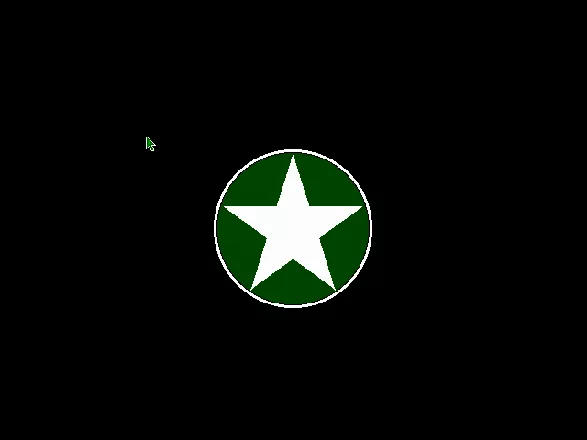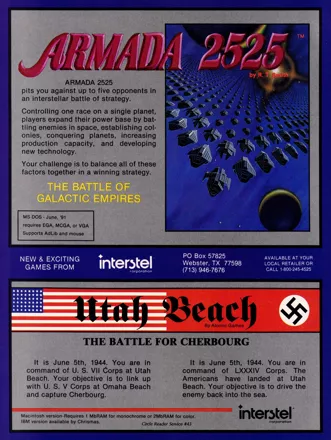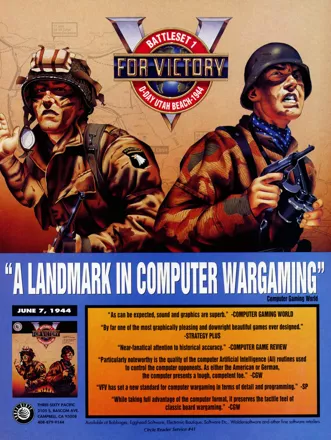V for Victory: Battleset 1 - D-Day Utah Beach - 1944
Description official descriptions
V for Victory: Utah Beach thrusts the player into the role of a military strategist during the Normandy invasion of WWII. As the American commander, the player has to overcome strong German resistance to occupy the Cotentin peninsula and the vital port facilities at Cherborg. Or, as the German Commander, the player has to defend Cherborg and drive the Americans back into the sea.
Groups +
Screenshots
Promos
Credits (DOS version)
6 People
| Design | |
| Programming | |
| Graphics / Artwork | |
| Cover Illustrator | |
| Production | |
| Cover Art | |
| Packaging | |
| Documentation |
Reviews
Critics
Average score: 76% (based on 5 ratings)
Players
Average score: 3.0 out of 5 (based on 8 ratings with 1 reviews)
This game (and the others in the series) is the highpoint of hex-based gaming
The Good
Up to the release of Utah Beach, every wargame on the computer attempted to basically copy an existing paper-n-pencil game onto the machine. Now the problem here is that these games are deliberately simplified because the players don't want to have to keep track of everything, so they have to leave out a tremendous amount of detail. What's worse is that most of these conversions present these simplifications to the user, for instance you'll see a unit has a "3" strength.
V4V was the first wargame (since Eastern Front) that broke the mold and wrote a computer wargame. Although it was hex-n-counters, the system kept track of considerably more detail, and hid it completely. Yet when you needed to know the details, for instance the supply state of your units, V4V used an excellent display system so you could see the state of all the units in the game at a glance.
Add to this a superb UI. Instead of simply doing what everyone else did, V4V used the basic UI principles of the Mac it shipped on. That is, you clicked and dragged units with the mouse to move and attack, and shift-clicked to give orders to multiple units. Commands were obvious and you didn't need to read a manual in order to operate the game itself -- although understanding how to win required a good read.
Another excellent addition was the supply engine. Instead of some sort of fixed pool of supplies, V4V simulated the flow of supplies from rear areas (in Utah, the beach hexes for the US, and particular roads for the Germans), traveling along roads to the HQ, and from there to the units. In a particular mode you could click on units and the computer would draw its supply line back to the beach hexes, allowing you to see who was in or out of supply, and why. You could even drop artillery on the roads in order to slow down the supply delivery.
In general the game was an excellent simulation of the battlefield, a reasonable simulation of combat, and was very clean, good looking, and easy to run.
The Bad
The main problem with the game is that the units lacked the ability to start the game in a "bad" state. This isn't so important in this particular game, but even in D-Day some of the German units were already understrength. For later games in the series this was far more important, the fact that the German units were "full strength" pretty much destroyed Market Garden for instance.
Another complaint is that the game used a system of fatigue that I found difficult to deal with. Units would grow tired so quickly in some cases that many of my encircling attacks would peter out long before they could close. This actually grew worse in later versions.
The Bottom Line
Great classic wargame.
DOS · by Maury Markowitz (266) · 2002
Trivia
Development history
In the designer diaries of Close Combat III, programmer Keith Zabalaoui calls it a miracle that this game was eventually released. Not only was it Atomic Games' first game, but the three main designers had different artistic vision and motivation. Keith wanted to make a game that people could play and understand. Ed Rains wanted to make a hard-core scholarly simulation, and Larry Merkel just wanted an enjoyable pastime that might make some extra cash.
Analytics
Upgrade to MobyPro to view research rankings!
Identifiers +
Contribute
Are you familiar with this game? Help document and preserve this entry in video game history! If your contribution is approved, you will earn points and be credited as a contributor.
Contributors to this Entry
Game added by Brian Hirt.
Macintosh added by Rebound Boy.
Additional contributors: Sciere, Alaka, WONDERなパン.
Game added March 1, 1999. Last modified August 12, 2023.
